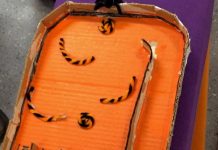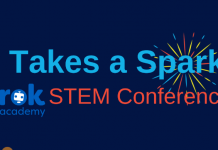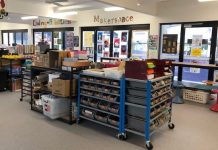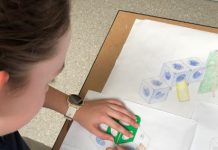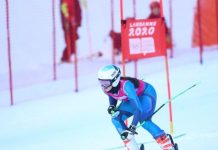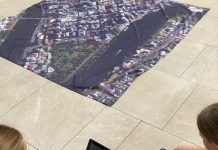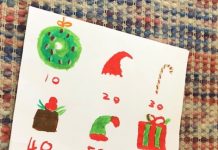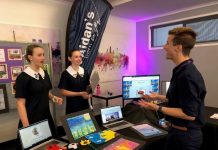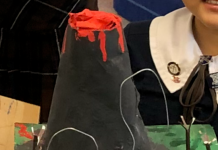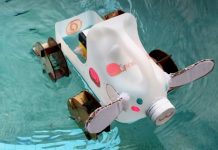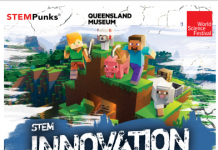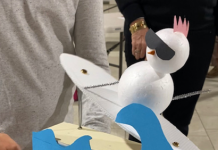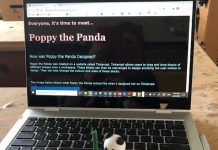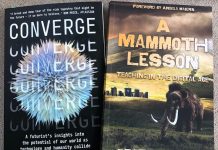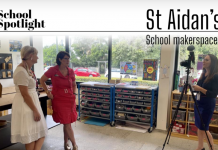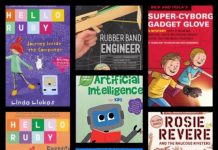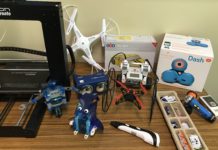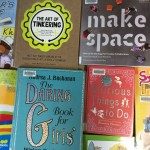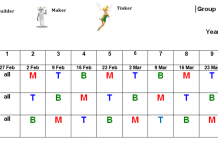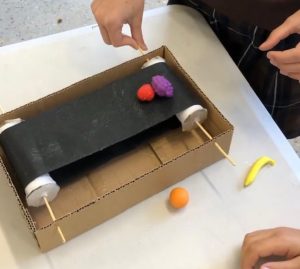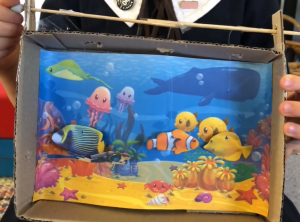 Engineering is about finding out how things are built, how they work and why. Hands-on engineering activities empower young children to see themselves as problem solvers. Engineering nurtures problem-solving and critical thinking skills, including problem groundwork, iteration, testing, and evaluation.
Engineering is about finding out how things are built, how they work and why. Hands-on engineering activities empower young children to see themselves as problem solvers. Engineering nurtures problem-solving and critical thinking skills, including problem groundwork, iteration, testing, and evaluation.
Recently students were introduced to winches and pulleys through creating interactive dioramas and simple conveyor belts.
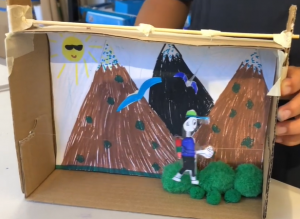 Students designed a scene for a diorama which used a circular pulley to move a character across the diorama and a winch to move objects up and down in the scene. Plenty of problem solving with placement, fixed axles, and tension! Students used skewers and fishing line for the winches and added a paper clip to pull the circular pulley.
Students designed a scene for a diorama which used a circular pulley to move a character across the diorama and a winch to move objects up and down in the scene. Plenty of problem solving with placement, fixed axles, and tension! Students used skewers and fishing line for the winches and added a paper clip to pull the circular pulley.
After looking at images of basic pulleys the students set about making a simple conveyor belt which used two fixed axle cylinders with a circular belt. Here is an image of the pieces required.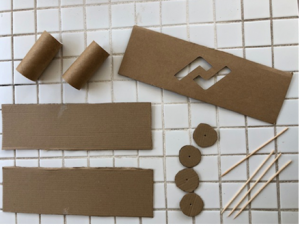
Simple conveyor belts made from cardboard and materials.
Adding a motor to the conveyor belt added challenges and fun to the activity!
https://youtube.com/shorts/vwaLMv30rSk
Looking at simple machines and how they are all around us is a great way to introduce students to engineering. Simple machines: wedge, wheel and axle, lever, inclined plane, screw and pulley underpin designing and creating Rube Goldberg machines, as can be seen in the many machines built in TechMate.
Putting these two ideas together to create a story ….moving furniture from an apartment block with a winch, carried to a truck by a conveyor belt!

